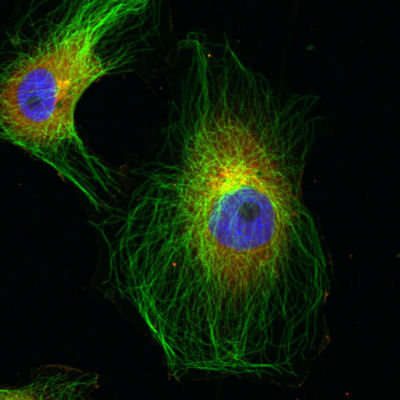|
Strona archiwalna!
Ta strona zawiera treści archiwalne, które nie były zmieniane po 23 września 2019 r. Jeśli chcesz wiedzieć więcej zapoznaj się z deklaracją dostępności
|
||||||
archiwum
 2006 2006
 2008 2008
 2010 2010
 2012 2012
 2014 2014 |
||||||

| ||||||
 |
 |
|||||

|
||||||
| strona główna założenia regulamin kalendarium wskazówki pobierz jury rejestracja zgłoszone projekty galeria gallery | archiwum kontakt | |||||
Description popularizing the research project An attempt to show the key organelle for a cell is just as irrational as answering the question without which organ in a human body it is possible to live on. It is hard to ensure welfare of an organism without spleen, duodenum or a muscle group, and a cell cannot function without to mitochondria, ribosomes, or selected elements of endoplasmic reticulum. However, it is a fact hard to deny that among all the organelles the best candidate for the heart and brain of the cell is its nucleus. It is the biggest intracellular structure which provides functioning of the others as it contains genetic scenario of events to come. The importance of the organelle is associated with the DNA collected there. Yet, as it turns out, the cell nucleus is responsible not for just the cell itself and it is not just a 'vessel' for nucleic acids. It is responsible for the whole organism and its offspring We may even say that the cell nucleus it is more its capsule than the contents. The multilayered, complex, tight and at the same time semipermeable membrane, on one hand, prevents the DNA from 'floating around' the cytoplasm, on the other hand enables the DNA to 'float' freely when it is necessary during cell division. Numerous layers of membranes surrounding the nucleus keep its right shape. During the division process they ensure the division is fair for daughter cells. When a cell is not dividing the membrane proteins, through letting in and out substances carrying information, wake up genes or turn them idle. It means that a cell, tissue, organ and the whole body can function properly only if the nuclear envelope with its innumerable protein components works properly. One mutation slightly altering one of the proteins may lead to degeneration, often irreversible, of a cell, and in turn of tissue and an organ which is built of it. That is how the metaphor of the heart and brain starts to sound ominous. Abstract JThe eukaryotic cell nucleus is separated from a cytoplasm by a nuclear envelope composed of nuclear lamina, outer and inner nuclear membranes, connected in the region of nuclear pore complexes. The nuclear lamina is an essential structure composed mainly of intermediate filament proteins, A- and B-type lamins. The structure is anchored to the inner nuclear membrane due to the numerous interactions with integral proteins: LAP2, LBR, MAN1 and emerin. The nuclear envelope plays a role in maintaining nuclear shape, organization of chromatin, and regulation of gene expression. Due to the fact that mutations in genes encoding components of the nuclear envelope (e.g. emerin or lamins), are the cause of many degenerative diseases collectively called the laminopathies, the study aimed at understanding its functioning, may contribute to development of knowledge of molecular processes, which may be invaluable in the development of therapies for people affected by this disorders. As a PhD student at the Laboratory of Nuclear Proteins (the Department of Biotechnology, University of Wroclaw) I conducted research under the leadership of Dr. Ryszard Rzepecki on the project concerning the location, function, and interactions of XLAP2 protein in Xenopus laevis (clawed frog). The project included, among others: examination of XLAP2 expression pattern, an analysis of the location of various proteins associated with the nuclear envelope (in cell line of Xenopus laevis XTC and, for comparative studies, in a human cell line HeLa), an analysis of the interactions between XLAP2 and mitotic spindle components with alkaloids influencing polymerization and depolymerization of cytoskeletal elements (cytochalasin, taxol and vinblastine). The project has allowed to supplement knowledge of the functioning of one of the components of the nuclear envelope in Xenopus laevis and became another step on the road to understand functioning of the cell nucleus in vertebrates.
|
|
|||||













